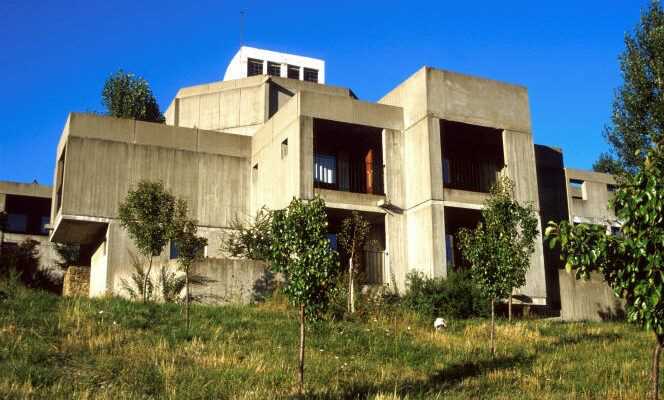Approaching the small Romanesque church in the village of Mazille, in Saône-et-Loire, our gaze is magnetized by the explosive background: a brutalist building, perched on the hill, bathed in a concrete gray. Who could believe that this architecture reminiscent of the lines of the Barbican Estate in London actually houses… a Catholic convent, the Carmel of Peace? Seen from a distance, the reinforced concrete blocks that make up the structure appear immense, so imposing that one wonders how such a construction could have emerged on these Burgundian lands rich in historical heritage, from Beaune to Cluny.
But the perspective acts as a trompe-l’oeil. Once mounted on the Butte Chaumont where the Carmelite is located, of this supposed architectural heaviness, nothing appears. We even look for concrete as the surrounding vegetation hides it and coats it. “It’s a necessarily intimidating place. You have to walk slowly, walk delicately ”, English architecture lecturer Jan Kenneth Birksted immediately warns, who has studied the place extensively. Very cut out, intertwined, the lines of the Carmelite deliberately fragment the perception of this religious place away from the world, labeled Heritage of the XXe century and listed in the Historic Monuments since 2013. Despite this beginning of official recognition, the Carmelite remains still unknown, like a secret jealously hidden by those who have spent the time of a retreat.
“This place is like a second skin”
If landscape and architecture come together, it is to protect those who have lived there since 1971: a community of 24 Carmelites who have vowed a cloistered life. As soon as they get out of the car, visitors who have come for a retreat, a service or a simple visit are greeted by Sister Juliana. With a bright smile, this sister of German origin is amused that we are so interested in the unique architecture of the Carmel. “This place is like a second skin. Wherever you are, everything is very harmonious, the eye is always at rest. It is an architecture which, with its great simplicity, does not hamper us ”, confides another nun, Sister Marie-Christine, who arrived at the Carmel in 1972. “The carcasses of the buildings were there but it was quickly necessary to plant poplars, fruit trees, and vegetation to bring the whole thing to life”, she adds, gazing at the beautiful kitchen garden of the community, below, where two young novices are busy that day.
You have 64.97% of this article left to read. The rest is for subscribers only.
